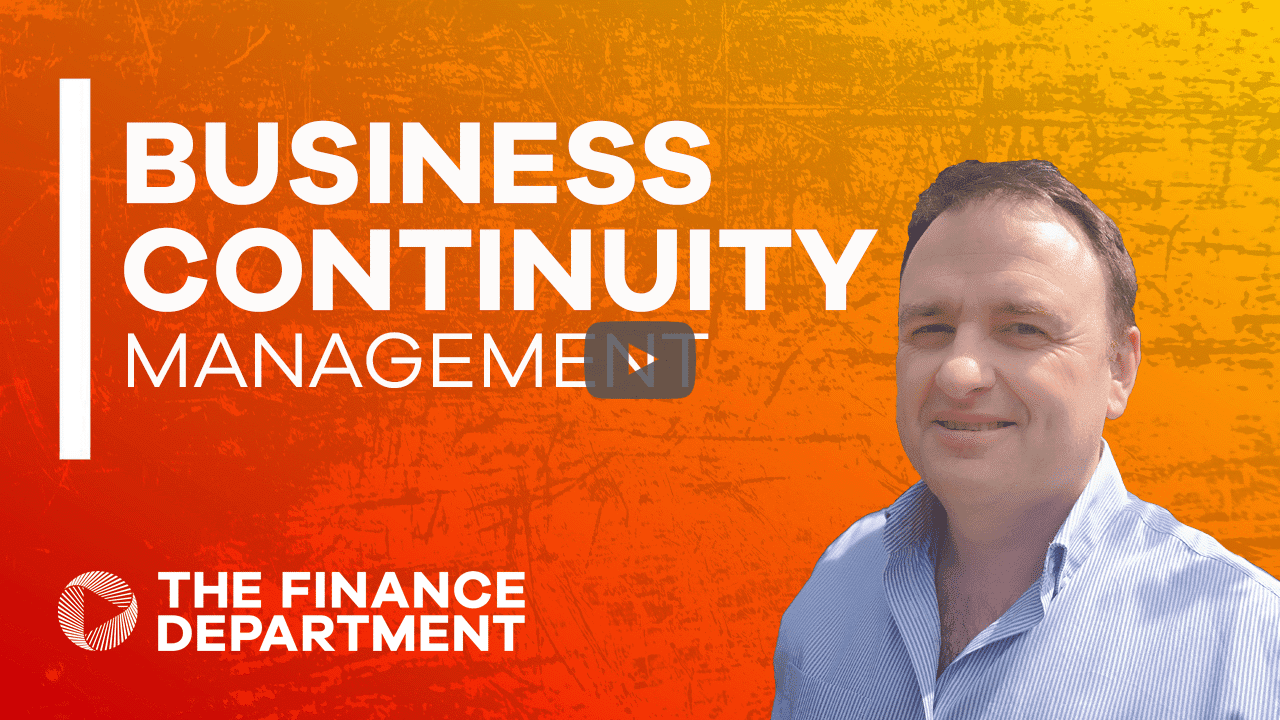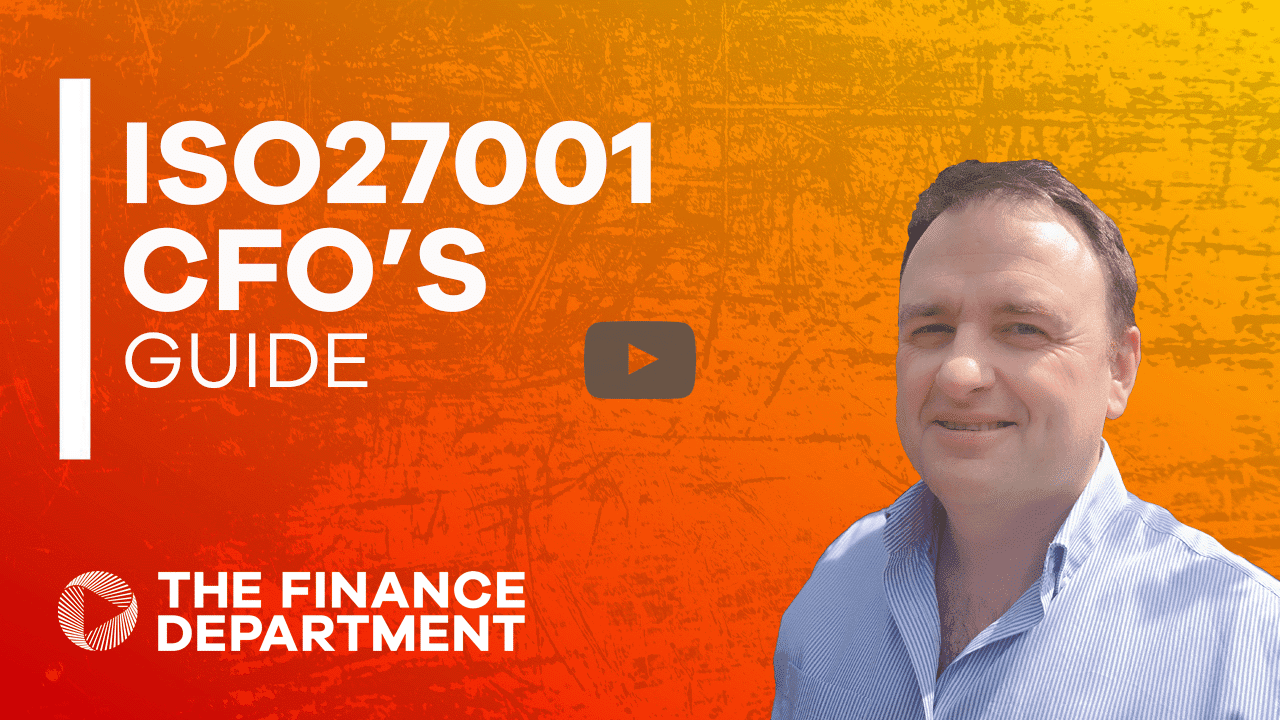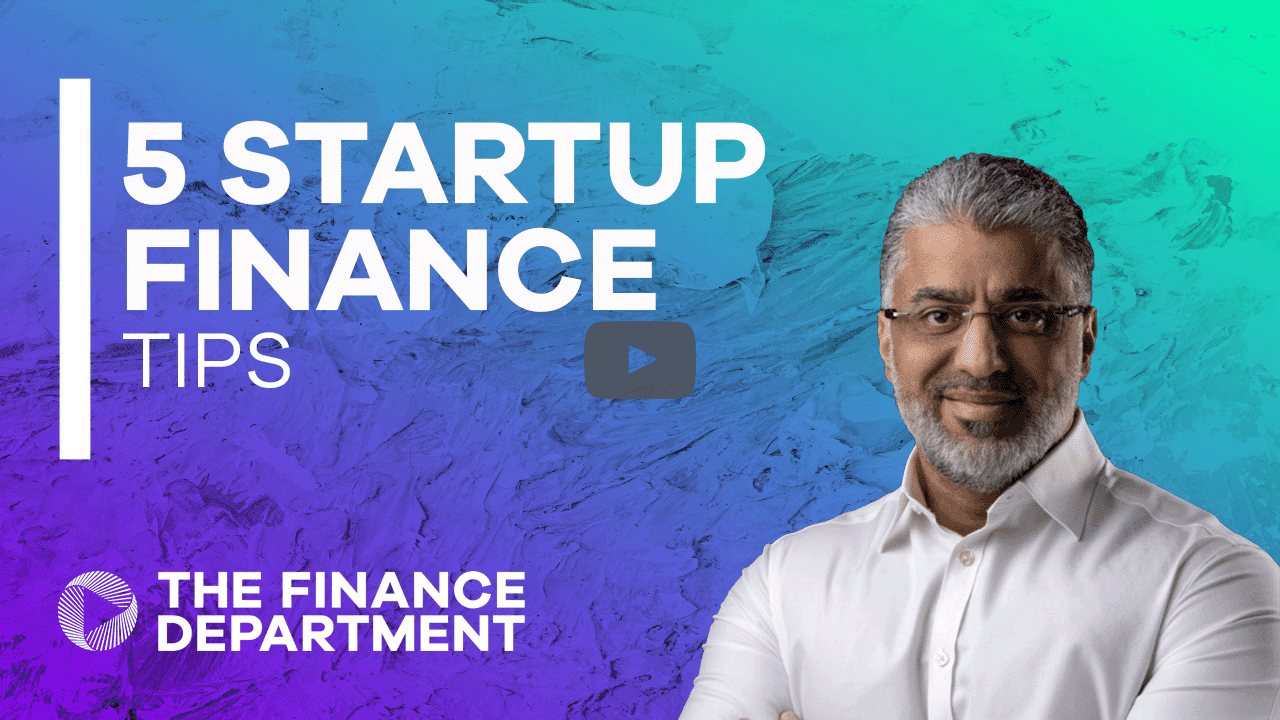Join today and start learning
TFD is the learning platform built for finance professionals.
This content is available as part of our bitesized video series.
Watch this video today by joining our free community.
Video : Not qualifying for SEIS or EIS – What you need to know
In this video, Anthony covers the common points of failure when raising investment capital via the Seed Enterprise Investment Scheme as well as the Enterprise Investment Scheme. As a leader in this space, Anthony covers:
– Old companies wanting to raise?
– Making sure the investor takes Ordinary Risk
– Investment structure
– Time restrictions
Hi, I’m Anthony Rose, Founder and CEO at Seed Legals.
At Seed Legals we do more SEIS / EIS applications and funding rounds than anyone else in the UK.
About one in five of all SEIS and one in six of all the early stage funding rounds is on Seed Legal.
So, we see lots and lots of Founders coming to us for their SEIS.
There are lots of articles on the internet, telling you what to do to get SEIS.
I’m here to tell you the six things you can do that mean, you won’t SEIS or EIS or your investors won’t.
So, let’s have some fun and look at it from the other angle.
Thing number one, your disqualifying activity.
So, if you’re into leasing, rental, energy generation, oil and gas exploration, your company won’t qualify for SEIS or EIS.
They see really weird, bizarre restrictions, why? Well, the background is, years ago, before SEIS or EIS, HMRC offered VCT, another scheme, and that was quite misused by funds who created these exploration companies then flip them or these sustainable wind companies and flip them later. So HMRC came up with new rules, a new scheme, SEIS and EIS and said you can’t do any of those activities.
Thing number two, if you’ve been trading, your company’s been trading for more than two years, you won’t get SEIS, and for more than seven years, you won’t get EIS.
So, that is from when you first started trading, either first income, or the doors open for trade, not from incorporation. So what to do, if your company has been trading for more than two or seven years?
Well, firstly, if you launch in a new territory, a new country, or you create new products, you can reset the clock for that provided you’ve got your SEIS or EIS already within that first period.
Sometimes, if your company qualifies, as a knowledge-intensive company, which means some fraction of your employees or either PHDs, we spend some fraction of your revenue on R&D, you can become a KIC or knowledge-intensive company and that increases your EIS period and also increases the maximum amounts that the company can raise with EIS.
So, if you can be a knowledge-intensive company that is good to do, if you don’t need to extend the seven years, when you doing your initial application, don’t try and put that you’re KIC, because it’ll just make your application more difficult.
Thing number three reason for being disqualified is if HMRC see you’ve created another company that you’re using to work around the two or seven year rule.
So, occasionally we see Founders on Seed Legals coming to us with a company and a look on company’s house shows they’re a director of another company with a very similar name that has been around for a lot longer. HMRC are smart and they look out for that. So be aware if you have one company and it’s been trading for longer than two years.
You very careful about trying to create another company because HMRC may well find that and deny your SEIS or EIS. We’ve even had a Founder who moved to the UK from Sweden and HMRC found his Swedish company, which was doing something similar and denied SEIS.
So, reason number four to lose or not get SEIS or EIS, is if you issue EIS shares before SEIS. So, it’s a technicality that catches people periodically. So, the rules are you have to issue SEIS shares before you issue EIS shares at least a day before.
So, imagine you have a funding round and you offer SEIS and EIS to your investors. They all send you the money together, that’s fine. But when the shares are issued you have to date, the SEIS shares at least a day earlier than the EIS. And if your accountant is doing the SH01 form for companies house and they don’t know this, and they just allocate them all on the same day, you’ll have an unpleasant conversation with you investors when you have to tell them:
Hey investors, good news, you’ve all got EIS cause HMRC denied your 50% deduction and gave you a 30% EIS deduction instead.
So, on Seed Legals, we’ve created a platform that automatically sorts this for you You enter the dates that all the money came in and the platform will date the share certificates accordingly. So, it’s one to be careful of.
Thing number 5, the rules of SEIS or EIS, say that the investor has to take the ordinary risks of an investor.
So, the idea is that the investors getting a generous tax break, courtesy of UK taxpayers, in return for taking a risk on an early stage company. But in order to take that risk, HMRC wants to make sure there can’t be an arrangement that repays them that they’re getting shares topped up, that it’s treated as a loan or something like that, debt to be repaid. So, if HMRC see any arrangement that gives them a preference including preference shares, antidilution, other rights and so on, that won’t qualify for SEIS or EIS.
And as the Founder, that’s a really great way of pushing investors away from preference shares, which are not in your favour and guiding them to ordinary shares. But note, there is something called a liquidation preference, an ordinary share that has the investor get repaid their investment first.
But it’s still SEIS and EIS compatible and you can ping us about that if you need more on Seed Legals.
So, thing number six.
If HMRC treats the investment as a loan, then the investor won’t get a SEIS or EIS. So, what does that mean? So if an investor gives you money today and they sign the shareholders agreement today and you give them shares tomorrow, that’s clearly an investment for shares. But, what if they gave you money four months ago? And you haven’t got round to doing funding? They’ve just given you money with no documentation. Well HMRC may look at that as if it’s a loan, if the money came in more than three months before the shares were issued.
So, if someone has given you money and they want SEIS or EIS, do not delay. Make sure either you issue shares within three months or they do what’s called an advance subscription agreement. We call it a seed fast, they’re insanely popular, which is an arrangement to say, I will give you money, you will give me shares and they have up to six months to allocate the shares.
So, those are the top six reasons why your investors, or you, may not be able to get a SEIS or EIS.
Anthony is CEO & Co-Founder of SeedLegals, a revolutionary new legaltech platform that lets startups and investors complete the legals needed to build, grow and fund their business, at a fraction of the cost of using a law firm.
Known as “The man behind BBC iPlayer”, Anthony ran the iPlayer and other BBC services from 2007 to 2010, taking the iPlayer from pre-launch to major success story. He is a technical and product visionary whose career has included 3D graphics, P2P music, internet video, social TV and online communities.
Video: Not qualifying for SEIS or EIS – What you need to know
In this video, Anthony covers the common points of failure when raising investment capital via the Seed Enterprise Investment Scheme as well as the Enterprise Investment Scheme. As a leader in this space, Anthony covers:
– Old companies wanting to raise?
– Making sure the investor takes Ordinary Risk
– Investment structure
– Time restrictions
Hi, I’m Anthony Rose, Founder and CEO at Seed Legals.
At Seed Legals we do more SEIS / EIS applications and funding rounds than anyone else in the UK.
About one in five of all SEIS and one in six of all the early stage funding rounds is on Seed Legal.
So, we see lots and lots of Founders coming to us for their SEIS.
There are lots of articles on the internet, telling you what to do to get SEIS.
I’m here to tell you the six things you can do that mean, you won’t SEIS or EIS or your investors won’t.
So, let’s have some fun and look at it from the other angle.
Thing number one, your disqualifying activity.
So, if you’re into leasing, rental, energy generation, oil and gas exploration, your company won’t qualify for SEIS or EIS.
They see really weird, bizarre restrictions, why? Well, the background is, years ago, before SEIS or EIS, HMRC offered VCT, another scheme, and that was quite misused by funds who created these exploration companies then flip them or these sustainable wind companies and flip them later. So HMRC came up with new rules, a new scheme, SEIS and EIS and said you can’t do any of those activities.
Thing number two, if you’ve been trading, your company’s been trading for more than two years, you won’t get SEIS, and for more than seven years, you won’t get EIS.
So, that is from when you first started trading, either first income, or the doors open for trade, not from incorporation. So what to do, if your company has been trading for more than two or seven years?
Well, firstly, if you launch in a new territory, a new country, or you create new products, you can reset the clock for that provided you’ve got your SEIS or EIS already within that first period.
Sometimes, if your company qualifies, as a knowledge-intensive company, which means some fraction of your employees or either PHDs, we spend some fraction of your revenue on R&D, you can become a KIC or knowledge-intensive company and that increases your EIS period and also increases the maximum amounts that the company can raise with EIS.
So, if you can be a knowledge-intensive company that is good to do, if you don’t need to extend the seven years, when you doing your initial application, don’t try and put that you’re KIC, because it’ll just make your application more difficult.
Thing number three reason for being disqualified is if HMRC see you’ve created another company that you’re using to work around the two or seven year rule.
So, occasionally we see Founders on Seed Legals coming to us with a company and a look on company’s house shows they’re a director of another company with a very similar name that has been around for a lot longer. HMRC are smart and they look out for that. So be aware if you have one company and it’s been trading for longer than two years.
You very careful about trying to create another company because HMRC may well find that and deny your SEIS or EIS. We’ve even had a Founder who moved to the UK from Sweden and HMRC found his Swedish company, which was doing something similar and denied SEIS.
So, reason number four to lose or not get SEIS or EIS, is if you issue EIS shares before SEIS. So, it’s a technicality that catches people periodically. So, the rules are you have to issue SEIS shares before you issue EIS shares at least a day before.
So, imagine you have a funding round and you offer SEIS and EIS to your investors. They all send you the money together, that’s fine. But when the shares are issued you have to date, the SEIS shares at least a day earlier than the EIS. And if your accountant is doing the SH01 form for companies house and they don’t know this, and they just allocate them all on the same day, you’ll have an unpleasant conversation with you investors when you have to tell them:
Hey investors, good news, you’ve all got EIS cause HMRC denied your 50% deduction and gave you a 30% EIS deduction instead.
So, on Seed Legals, we’ve created a platform that automatically sorts this for you You enter the dates that all the money came in and the platform will date the share certificates accordingly. So, it’s one to be careful of.
Thing number 5, the rules of SEIS or EIS, say that the investor has to take the ordinary risks of an investor.
So, the idea is that the investors getting a generous tax break, courtesy of UK taxpayers, in return for taking a risk on an early stage company. But in order to take that risk, HMRC wants to make sure there can’t be an arrangement that repays them that they’re getting shares topped up, that it’s treated as a loan or something like that, debt to be repaid. So, if HMRC see any arrangement that gives them a preference including preference shares, antidilution, other rights and so on, that won’t qualify for SEIS or EIS.
And as the Founder, that’s a really great way of pushing investors away from preference shares, which are not in your favour and guiding them to ordinary shares. But note, there is something called a liquidation preference, an ordinary share that has the investor get repaid their investment first.
But it’s still SEIS and EIS compatible and you can ping us about that if you need more on Seed Legals.
So, thing number six.
If HMRC treats the investment as a loan, then the investor won’t get a SEIS or EIS. So, what does that mean? So if an investor gives you money today and they sign the shareholders agreement today and you give them shares tomorrow, that’s clearly an investment for shares. But, what if they gave you money four months ago? And you haven’t got round to doing funding? They’ve just given you money with no documentation. Well HMRC may look at that as if it’s a loan, if the money came in more than three months before the shares were issued.
So, if someone has given you money and they want SEIS or EIS, do not delay. Make sure either you issue shares within three months or they do what’s called an advance subscription agreement. We call it a seed fast, they’re insanely popular, which is an arrangement to say, I will give you money, you will give me shares and they have up to six months to allocate the shares.
So, those are the top six reasons why your investors, or you, may not be able to get a SEIS or EIS.
Anthony is CEO & Co-Founder of SeedLegals, a revolutionary new legaltech platform that lets startups and investors complete the legals needed to build, grow and fund their business, at a fraction of the cost of using a law firm.
Known as “The man behind BBC iPlayer”, Anthony ran the iPlayer and other BBC services from 2007 to 2010, taking the iPlayer from pre-launch to major success story. He is a technical and product visionary whose career has included 3D graphics, P2P music, internet video, social TV and online communities.










